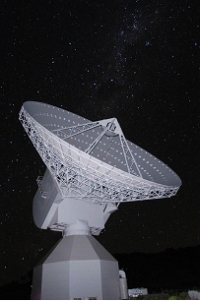ESOC Ground Segment
 |
|
ESA's first deep space ground station at New Norcia (Western Australia). The 35m antenna is used to maintain communications with the satellite at distances of up to 900 million kilometres away from Earth. |
RMOC work closely with the ESA tracking network (ESTRACK), with the deep space antenna located in New Norcia near Perth, Western Australia, as the primary ground station. During critical mission phases (launch, planet fly-bys, approach and arrival at the comet, lander delivery and relay) RMOC is supported for tracking, telemetry and command by the ESA ground station located in Kourou and the NASA Deep Space Network (DSN).
The Rosetta ground segment is designed to meet both the scientific objectives and the challenges imposed by a deep space mission. These challenges include long turnaround times for signals (up to 100 minutes), low bit rates (8 bps), low power (spacecraft in hibernation for 2.5 years), and the requirement for particular configurations of planets – to allow for gravity assist manoeuvres at Mars and at Earth. In addition, ESOC will cope with the long mission duration and the related problem of maintaining expertise and experience, while minimizing the overall cost.
For the complete mission duration (from launch to the end of mission, when ground contact to the spacecraft and payload is terminated), ESOC will provide facilities and services to the scientific community for planning and execution of scientific data acquisition. This will include generating and providing complete raw-data sets and necessary auxiliary data to the Principal Investigators, and the Rosetta Lander Ground Segment.
The Rosetta Science Ground Segment (RSGS) supports scientific mission planning and experiment command request preparation for consolidated onward submittal to the RMOC. The role of RSGS is to ensure that the science instruments operate as required to address the science goals of the mission. They are also responsible for making the scientific data archive available to the scientific community. A Rosetta Lander Ground Segment (RLGS) will support operations of the Lander, in particular before and after completion of the landing and relay phase.
